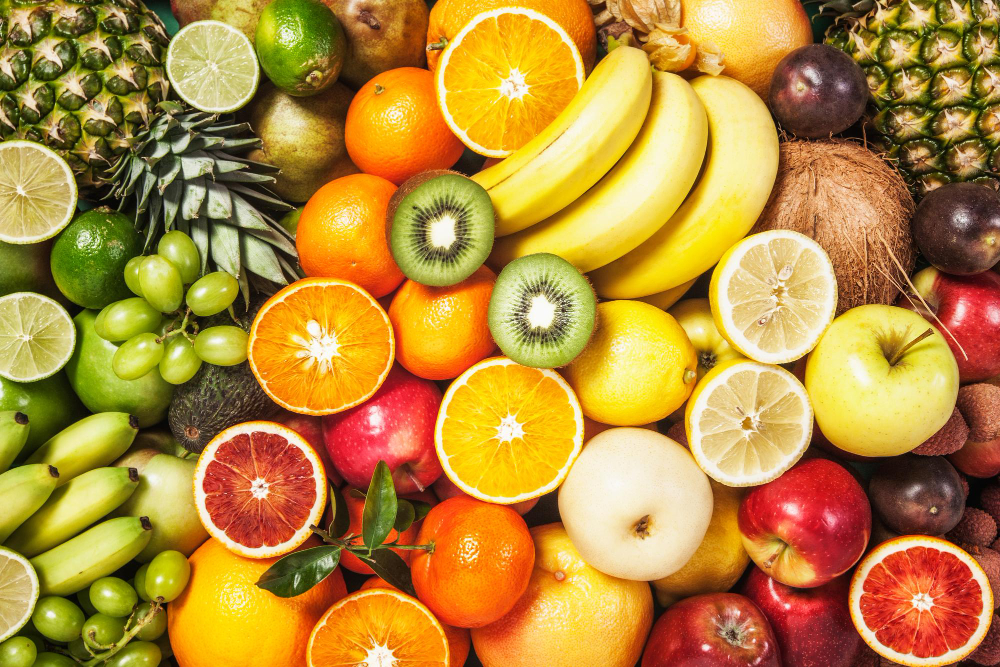Fruits, nature’s sweet treats, are not only beneficial to humans but can also provide a wealth of health benefits to our furry friends. Bursting with vitamins, minerals, and fiber, fruits are a powerhouse of nutrition. Many fruits are classified as functional foods due to the presence of bioactive compounds that contribute to various health benefits. However, when it comes to feeding fruits to dogs and cats, it’s essential to do so with care and knowledge. This comprehensive guide will help you understand how to safely introduce fruits into your pet’s diet and prepare delectable fruit snacks that your pets will love.
The Benefits of Fruits for Pets
Fruits are composed of about 70-80% water, making them an excellent source of hydration, particularly beneficial for kidney health. On hot days, fruits can help alleviate heat, and serving them as ice treats can enhance this cooling effect.
The bioactive compounds in fruits offer numerous health benefits, including antioxidant activity, immune system stimulation, hormonal balance, and antibacterial and antiviral properties. These compounds protect cells against the damaging effects of free radicals naturally produced by the body.
Introducing new foods like fruits into your pet’s diet can also serve as a form of environmental enrichment. This cognitive stimulation can be a welcome change for pets accustomed to a monotonous diet. For more insights on environmental enrichment, check out this comprehensive guide on Enhancing Your Dog’s Environment.
Selecting and Serving Fruits: A Balanced Approach for Your Pets
While fruits are generally beneficial, not all are suitable for dogs and cats. Some fruits contain nutrients that can be toxic or indigestible for pets. Safe options include melon, watermelon, papaya, apple, mango, pear, banana, orange, tangerine, and pineapple. However, remember that pets, especially cats, can be neophobic, meaning they may be averse to new foods. So, it’s important to introduce new fruits gradually and observe your pet’s reaction.
Once you’ve identified the fruits your pet enjoys and can safely consume, the next step is determining the right portion size. The amount of fruit you can give your pet as a snack depends on their daily energy needs, which should not exceed 10% of their daily caloric intake. This calculation should ideally be made by a professional trained in animal nutrition, considering factors like the pet’s life stage, physical activity, and health condition. For healthy pets, a simple rule of thumb is to provide fruit equivalent to 10% of the daily food intake in grams.
By carefully selecting and portioning fruit snacks, you can ensure your pets enjoy the benefits of these nutritious treats without risking their health. This balanced approach to incorporating fruits into your pet’s diet can enhance their mealtime experience and contribute to their overall wellbeing.
Creative Ways to Serve Fruit Snacks
Fruits can be served in their natural form, but for an extra cognitive boost, consider preparing homemade fruit snacks. Here are some ideas:
- Fruit Popsicles: Ideal for hot days, these are simple to make. Chop up your chosen fruits, place them in ice cube trays, cover with water, and freeze.
- Breath-Freshening Treats: Combine apple (with skin), fresh coconut, mint, eggs, and coconut oil in a food processor. Mix with rice flour and chia seeds, mold, and bake at 180°C for 20 minutes.
- Banana Cookies: Blend rolled oats, a ripe banana, and cinnamon powder to form a dough. Shape into cookies and bake at 180°C for 15 minutes.
- Fruit Pate: Crush soft fruits like papaya, banana, or strawberry to a soft consistency and place in slow feeders for your pet to enjoy.
Fruits to Consider and Their Precautions
- Pineapple: Rich in vitamins A and B, calcium, phosphorus, and potassium, pineapple should be offered in moderation due to its acidity.
- Banana: A good source of vitamin A, B vitamins, and essential minerals, bananas should be offered sparingly due to their high fructose and calorie content.
- Orange: While oranges are rich in fiber, their acidity requires moderation. Always remove the peel and seeds before serving.
- Apple: A favorite among pets, apples are rich in vitamins A, B, C, and E, and fiber. Always serve without seeds.
- Papaya: Ideal for recipes, papaya is rich in vitamin A, fiber, calcium, and potassium. However, it has a slightly laxative effect, so moderation is key.
Incorporating fruits into your pet’s diet can enhance their quality of life without compromising their primary diet. With these tips, you can safely introduce a variety of flavors and textures into your pet’s meals, making mealtime an exciting and enriching experience.
Conclusion: Fruits – A Healthy Addition to Your Pet’s Diet
Incorporating fruits into your pet’s diet can be a game-changer. These natural treats, packed with vitamins, minerals, and bioactive compounds, offer a host of health benefits, from boosting hydration to enhancing cognitive stimulation. However, it’s crucial to introduce fruits into your pet’s diet with care, considering their individual preferences, nutritional needs, and potential reactions to new foods.
By selecting suitable fruits and serving them in appropriate portions, you can ensure your pets enjoy these nutritious additions without compromising their primary diet. Moreover, getting creative with how you serve these fruits can turn mealtime into an exciting and enriching experience for your pets.
Remember, while fruits can enhance your pet’s diet, they are not a substitute for a balanced, species-appropriate diet. Always consult with a professional trained in animal nutrition before making significant changes to your pet’s diet.
In the end, the goal is to provide our pets with a diet that not only sustains them but also contributes to their overall health and wellbeing. With the right approach, fruits can be a valuable part of achieving this goal, adding a splash of color, a variety of flavors, and a wealth of nutrients to your pet’s meals.

